Companion Flowers for Vegetables to Grow in Containers
Updated: Oct. 23, 2023
You probably grow flowers in containers and maybe a veggie garden. But this year, mix it up with the best companion flowers for vegetables.
Mix Companion Flowers With Vegetables
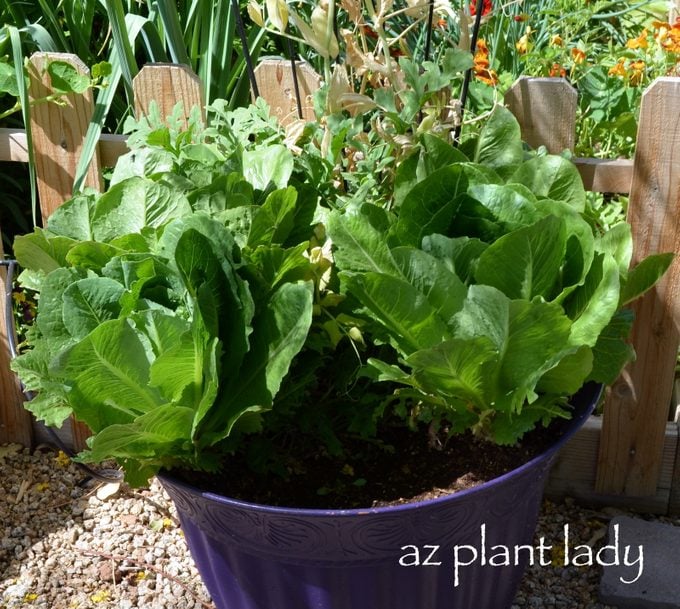
Did you know that you can grow many types of vegetables in containers? You may be surprised to find that you can also add flowers to the same containers, mixed together with your vegetables. Many of your favorite ornamental plants make great companion flowers for vegetables.
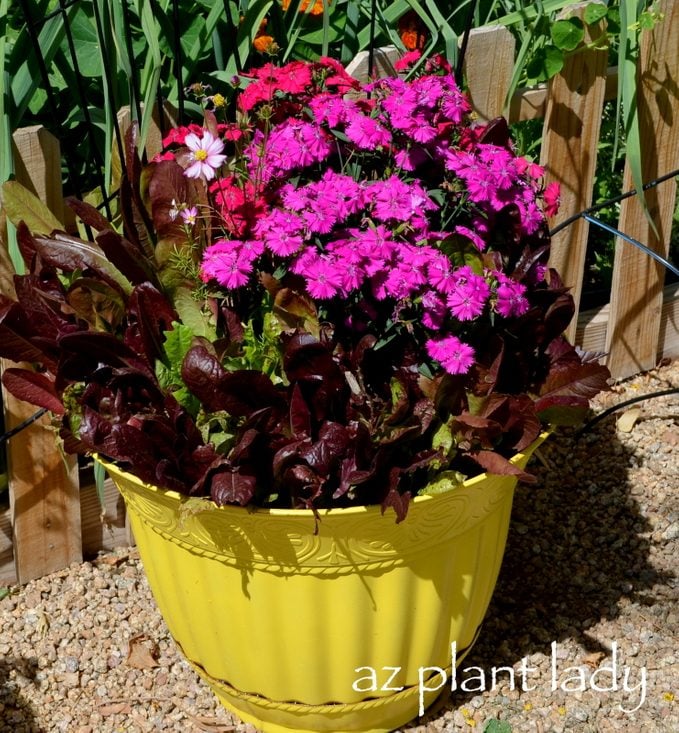
This is what I call a perfect marriage of plants—beautiful flowers and delicious vegetables in a single container. Flowers add visual interest to the pots where you have vegetables growing. As an added bonus, the flowers attract pollinators for many of your vegetables as well.
Here’s why tomatoes make great sunflower companion plants.
How to Plant Flowers and Vegetables in Containers
Growing vegetables and flowers together is easy:
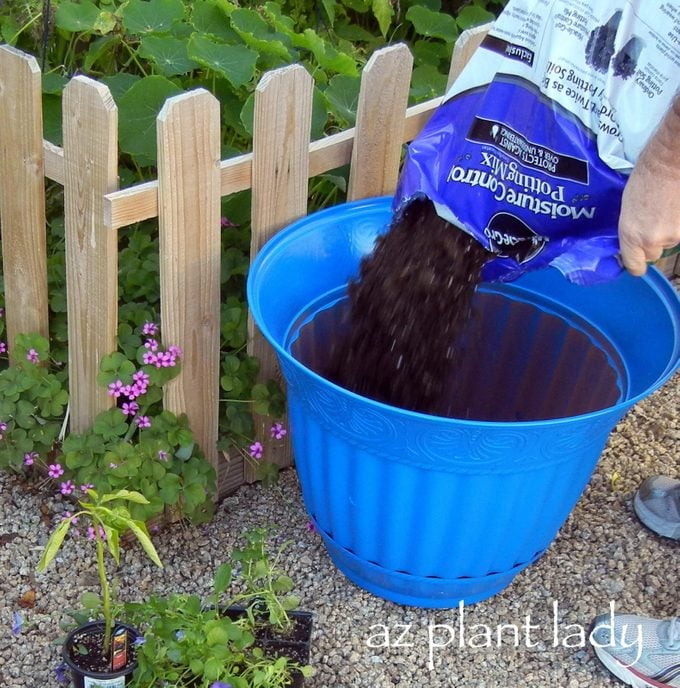
Place containers where they will receive at least 6 hours of sun and fill your containers with potting mix, which is specially formulated to hold just the right amount of water. Avoid using garden soil, which doesn’t always drain well enough.
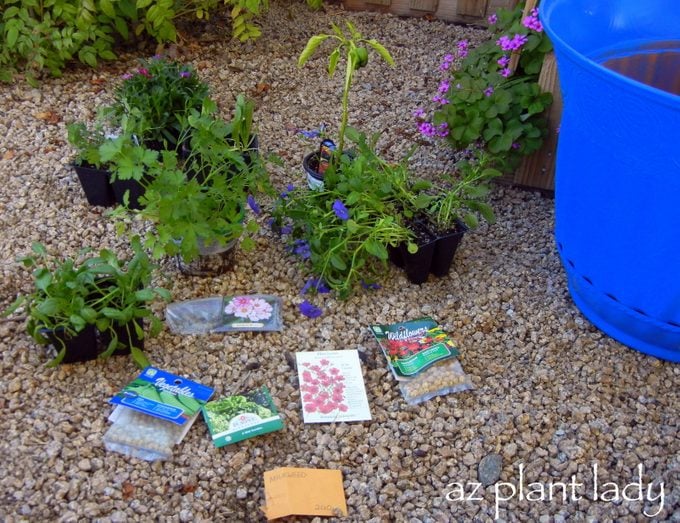
Gather vegetable and flower transplants, or for some varieties, you can direct sow seeds after the last frost in your area. Add a slow-release fertilizer to the top 2 inches of soil before planting, which will slowly release nutrients. Vegetables need fertile soil to thrive.
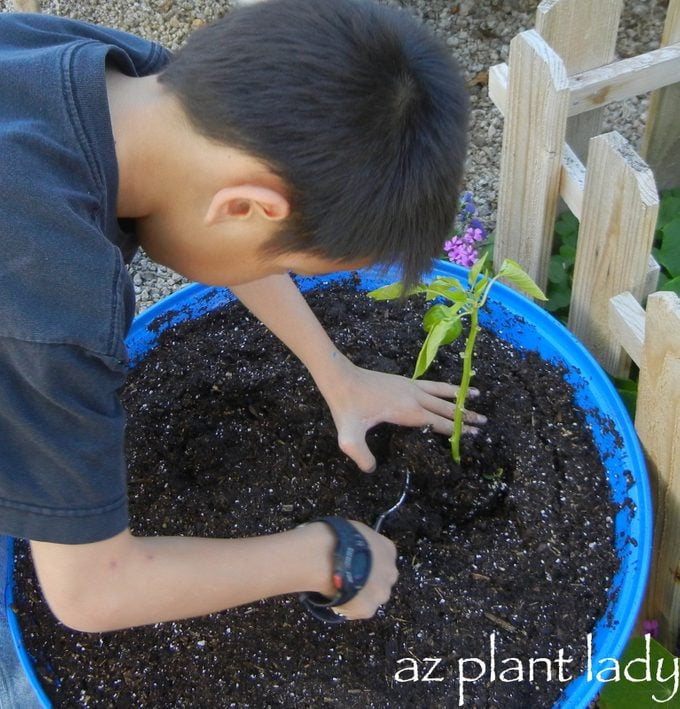
Add your plants and water deeply. The key to growing vegetables and flowers in containers is proper watering. Because the amount of water needed varies, depending on weather and sun exposure, it’s important to check your containers regularly. Simply insert your finger 1 inch deep; if the planting mix is moist, then the plants don’t need water. However, if it’s dry you should water deeply.
After eight weeks of growth, here is what your container will look like (below):
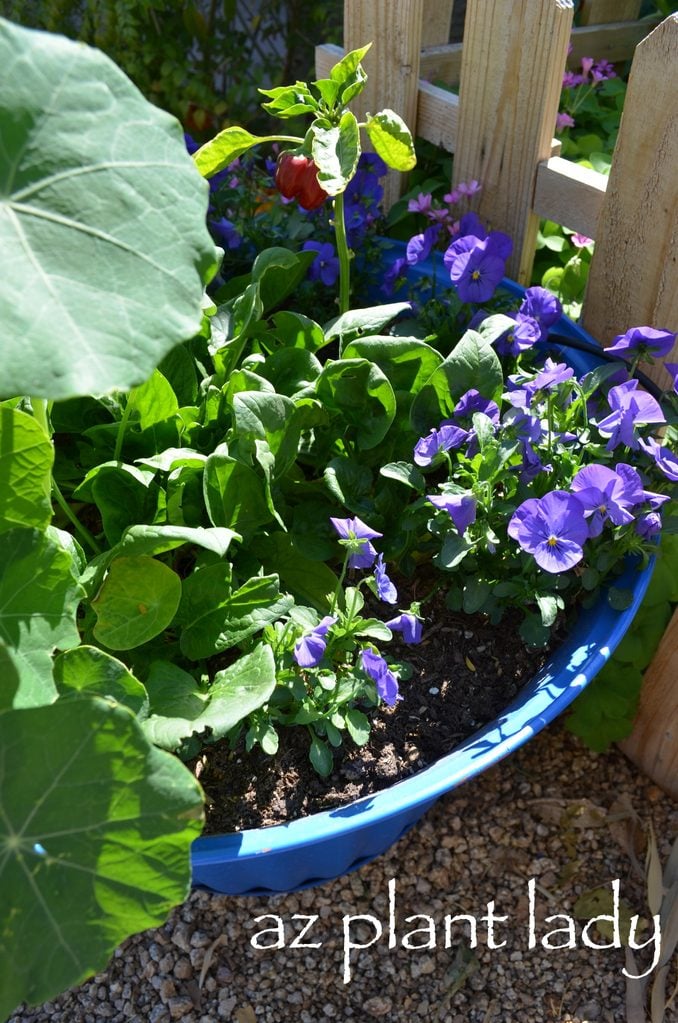
So, are you ready to start?
Here’s how to plant your own herb container garden.
How to Design Flower and Vegetable Containers
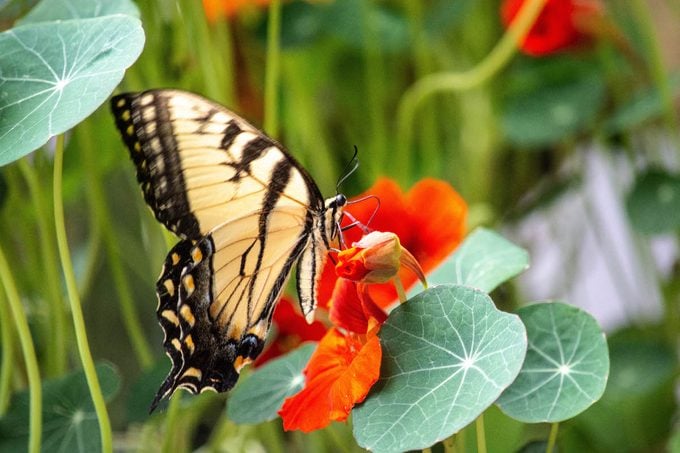
The potential combinations of flowers and vegetables are endless. Choose flowers that will grow and thrive in the same season and growing conditions that the vegetables do. And be sure that the plants you select will grow to approximately the same size, so that one plant doesn’t overwhelm the others.
- Match cool-season vegetables such as lettuce and spinach with alyssum, nasturtiums, petunias, violas or perennial flowers.
- Plant warm-season vegetables like peppers, beans and cucumbers with celosia, verbena, sweet potato vine or vinca just to name a few.
Of course, you can simply purchase whatever flowering plant that catches your eye. So, go ahead and get started and fill your containers with beautiful and delicious plants!
Learn how to grow colorful and edible ornamental flowering kale.
Best Vegetables to Grow in Containers
Here is a list of vegetables that do well in containers:
- Beans
- Lettuce
- Peppers
- Spinach
- Cucumbers (provide support)
- Tomatoes (provide support)
Vegetables to Avoid Planting in Containers
Some vegetables DON’T do well growing in in pots.
- Asparagus
- Cauliflower
- Corn
- Melons
- Root vegetables like carrots, radishes and turnips